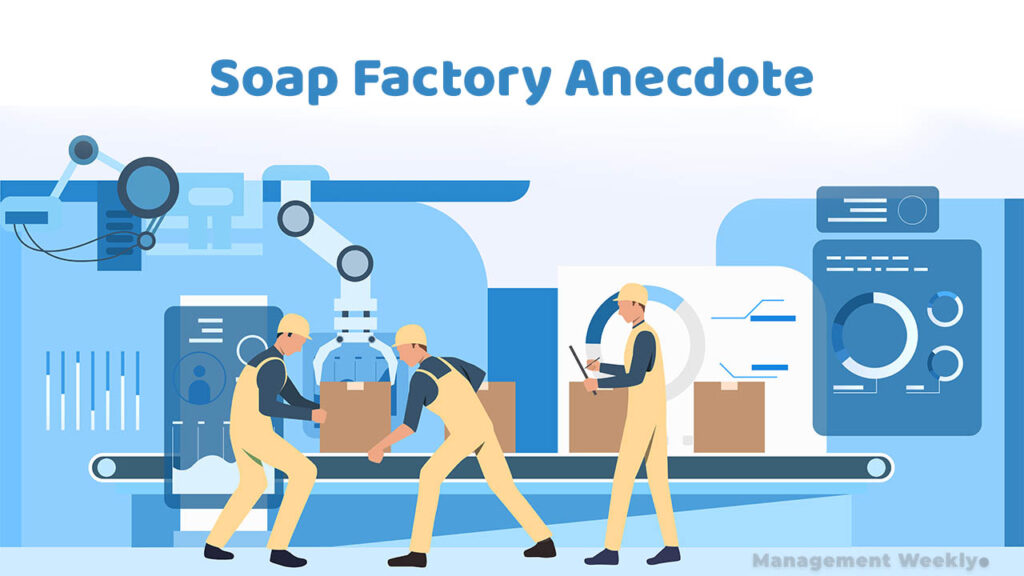It is very difficult to differentiate yourself when you make a product like an office chair. Also, competing on value proposition is not easy. The American furniture company, Herman Miller was able to pull this off, and they did it so well that they witness a 500% increase in productivity. One of their products is the Aeron chair which is one of the most recognizable office furniture in the United States. This is one of the many Kaizen examples in Manufacturing that we shall discuss here. Kaizen provided them a much-needed increase in quality, reduction in manufacturing cost, and improvement in production times.
Brief introduction to Kaizen
Kaizen is the Japanese term that signifies ‘small, continuous improvements.’ These improvements accumulate over time and lead to a major increase. Although, it sounds great in concept but challenging to implement in practice.
⚡ Check out our detailed article on explanation of the Kaizen ➤ Kaizen Model of Continuous Improvement
Kaizen examples in factory
Here we shall discuss two examples of Kaizen implementation in the factory:
- Daily Kaizen – Toyota
- Kaizen events – Motorola
Daily Kaizen at Toyota

Toyota was one of the first manufacturers who adopted the Kaizen philosophy. Later companies like GM attempted to emulate these practices. There are many kaizen examples in manufacturing from companies that later adopted this concept as well. However, Toyota was one of the first companies to implement the concept of daily kaizen. The daily kaizen principle says that every day is an opportunity for improvement. This is achieved in the following steps:
- Continuously question the processes and workflows – The traditional factories such as Ford Motor Company is based on the concept of absolute productivity. Their goal was to minimize any down time for the assembly line. Any down time meant that they were wasting precious time and having lower output than capacity. On the other hand, companies such as Toyota were alright with downtime. Even to the extent that they encouraged their workers to stop the production any time they wanted. Toyota had an Andon cord at their assembly line. It could be pulled any time to stop the production.
- Adopt visualization and monitoring tools – We use sophisticated tool for project management that helps us visualize the progress. However, most of these visualizations can be traced back to the humble hand made charts. Japanese used one such technique called the ‘Kanban.’ Kanban is a visualization method by which we can define the tasks and then reresent them in terms of their progress so that their completion can be assessed more clearly.
A typical job or task is represented as a flag. This flag starts off from the ‘requested’ column. As the work begins on it, it is shifted to the ‘in progress’ column. This column is sometimes called Work in Progress or WIP. Next this task is taken on to the ‘done’ column. - Embrace small experiments – experiments are small changes that are tested out. When they are found to be successful, these changes are adopted else they are dropped. Toyota is an exemplar in the case of kaizen becuase it encourages the employees to experiment their ideas. An article by Takeuchi, Osono and Shimizu talk about the bold conceptualization of Toyota Prius. They decided to develop a car that had 100% improvement in fuel efficiency.
After a lot of research, experimentation, failing and learning, they were able to launch the car in 1997. It became one of the world’s most popular hybrid vehicles and remained a favorite among environmentally concious buyers for a long time.
Kaizen event at Motorola
The first example of Kaizen in the factory is from Motorola. They introduced the concept of ‘Kaizen events.’ Kaizen events are the occasions of quality improvement. These offer us ways to look into the defects, issues, and challenges that we encounter in the factory. A brief summary of the Kaizen event is summarized below:
- Formation of the discussion team – a small team from different areas come together to discuss. This panel discussion focuses on one specific process. Japanese taught us the value of bottoms up communication channel. Therefore, in these discussions we need to have people who are working on the shop floor as well as mid-level managers.
- The Observation process – In the second step, the team is tasked with careful observation. Another page from the Japanese system of management. A walk to the shop floor is referred as ‘Gemba’ and the act is sometimes called as ‘going to Gemba’. Again, a bottom oriented management. It makes the mid and senior managers get physically close to the lower levels and see the real place where action takes place. No wonder, Gemba literally means ‘real place.’
- Improvement – In the very beginning we talked about ‘small, continuous improvements.’ These improvements must be meaningful and come from the observed defects. Sometimes the suggestions for improvements are never taken seriously, especially when it comes from lower rungs of the organization. Second issue is inter-departmental policies and politics which can prevent the acceptance of good ideas. It is the job of quality manager to ensure that ideas are evaluated based on merit only.
- Implementation and testing phase – once the ideas are accepted, they need to be tested for application. Some ideas may improve the current process while some may deteriorate it. Again, an impartial evaluation of these ideas will help the organization gain benefit from Kaizen.
Because of these approaches, Motorola remains one of the best Kaizen Examples in Manufacturing.
Kaizen examples in manufacturing
A soap company faced a peculiar problem. They had a fully automated plant where the soaps were cut, packed into retail packages, and then stacked inside reseller boxes. They were getting numerous complaints regarding empty boxes being shipped to the warehouses. This posed a threat to their quality perception. What could be done to eliminate such mistakes?
They hired an external consultancy to look into the problem. The consultants provided top-class services and thoroughly looked at the problem. They realized that the problem can be detected with the help of a sensitive X-ray machine that can scan the boxes coming out of the production line. If the workers saw that the boxes were empty, they would remove them from the conveyor belt. The company saw an immediate decline in the number of complaints after this sophisticated system was set into place. The senior managers were happy with the result.

$600,000 vs $100 solution
This was not the end of the story. It had been barely three weeks since the new system was in place that the production manager noticed that the system stopped giving any defects. He re-checked the data from his dashboard and thought that the system had developed some fault. After that, he walked to the shop floor to check out the issue before raising a support ticket with the company that had set it up. He could not find any problem with the machine. It was working absolutely fine. The manager even tested it by sending empty boxes which showed up on the X-ray screen correctly.
Nevertheless, the machine operator returned from her tea break and saw the bewildered expression of the manager. When he learned his predicament, she could not stop laughing. She did not believe that the company had spent $600,000 on the machine only to detect empty boxes. She took the manager to a point barely ten meters away from the machine to show her improvisation. Apparently, she was tired of looking at the X-ray screen the whole day long. Therefore, she had installed a small table fan right across the conveyor belt. Whenever there was an empty box that came across, the fan would blow it out of the way.

I was pretty pleased to discover this great site. I need to to thank you for your time for this particularly fantastic read!! I definitely appreciated every part of it and I have you book marked to see new stuff on your blog.
Very good thought